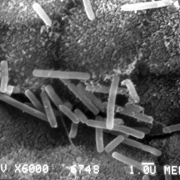Are prebiotics good for dogs and cats? An animal gut health expert explains
By Kelly S. Swanson, PhD, The Kraft Heinz Company Endowed Professor in Human Nutrition, University of Illinois at Urbana-Champaign, USA
Pet dogs and cats are cherished companions. In developed countries, many households with pets treat them like family members. Similarly to humans, a high level of nutrition and veterinary care promotes health and longevity. As people become more aware of what they feed themselves and their human family, they make the same considerations for their canine and feline companions. Pet food trends have closely followed those of the human food industry over the last couple decades, with high-quality natural and organic foods gaining popularity.
One way pet food companies have enhanced their products is by incorporating functional ingredients into their formulas. Functional ingredients provide benefits beyond that of their nutrient content. One of the most popular target areas for functional ingredients is pet gastrointestinal health, with structure/function claims of “supporting digestive health”, or something similar, being quite common. Loose stools, constipation, and various gastrointestinal disorders and diseases such as inflammatory bowel diseases and irritable bowel syndrome are common in pets. The task of “poop scooping” after the dog in the park or cleaning out the cat’s litterbox provides owners with an opportunity for daily assessment of stool quality and serves as a reminder of how important diet is to gut health.
Benefits of prebiotics for pets
Many ingredients, including dietary fibers, prebiotics, probiotics, synbiotics, postbiotics, and other immunomodulators may provide gastrointestinal benefits to pets, but today we will focus on prebiotics. The most recent ISAPP expert consensus panel on prebiotics clarified that the prebiotic concept not only applies to humans, but also to companion and production animals (Gibson). Dogs and cats evolved as Carnivora, mainly consuming high-protein, high-fat diets that were low in fiber, and their short, simple gastrointestinal tracts have a limited capacity to ferment non-digestible substances. Nonetheless, they possess an active microbiota population, primarily in the colon, that may be manipulated by diet to impact health.
Most prebiotic research in pets has focused on the gastrointestinal tract. Prebiotic administration has been shown to reduce the incidence or severity of infections (Apanavicius; Gouveia), improve stool consistency (Kanakupt), and beneficially shift fecal microbiota and metabolite profiles (Propst). A few have reported the benefits that prebiotics may have on metabolic health, demonstrating improved glucose metabolism and insulin sensitivity in pets consuming prebiotics (Respondek; Verbrugghe). Since we’re looking at foods rather than at medicines that address disease, the majority of research has been conducted in healthy animals so evidence of health improvements in diseased pets is sparse.
Types of pet-friendly prebiotics
Although a few studies have tested galactooligosaccharides (GOS), mannanoligosaccharides, and other potential prebiotics, by far the most common prebiotics studied and present in pet foods are the non-digestible fructans. Natural sources, such as chicory, or isolates and extracts that have a high purity, including short-chain fructooligosaccharides (FOS), oligofructose, and inulin, are all present in pet foods.
Which pets benefit most?
Similar to dietary fiber, the need for prebiotic inclusion is dependent upon diet type and formulation. Animals consuming plant-based diets that are rich in natural fibers and non-digestible oligosaccharides likely do not require additional fermentable substrate in the formula. Dogs and cats fed high-protein, meat-based diets, however, typically have greater fecal odor, a higher colonic pH, and higher density of potential pathogens due to a high rate of protein fermentation. In those diets, prebiotic inclusion may help animals normalize their gut microbiota abundance and metabolism.
Prebiotics may be fed to all pets, but will likely provide the greatest benefits to geriatrics, animals who are or have received antibiotics, those under high stress conditions, or those with certain gastrointestinal disorders. The low caloric density of prebiotics and the metabolic benefits that come from their fermentation will be most beneficial to pets with obesity and diabetes. As for all functional ingredients, dosage is important. When comparing dogs and cats, dogs usually can tolerate a higher dosage than cats. In regard to dog size, small dogs can typically tolerate a higher dosage (per unit body weight) than large dogs, which are more susceptible to loose stools. In most commercial pet foods, prebiotic inclusion levels are <0.5% of the formula to limit side effects.
Further research on prebiotic substances
Using the powerful tools that are now available to study gut microbiota and host physiology, future research can hopefully determine what microbes are most important to the health of dogs and cats and identify mechanisms by which prebiotics provide health benefits to pets. Further testing, which may include plant-based ingredients, yeast-based products, and milk oligosaccharide mimics, will hopefully identify other prebiotic substances and continue to expand our knowledge in the field.
Kelly Swanson joined the ISAPP board of directors in June, 2020, providing valuable expertise in animal gut health and overall health. Swanson also chaired the 2019 ISAPP-led international consensus panel on the definition of synbiotics.














